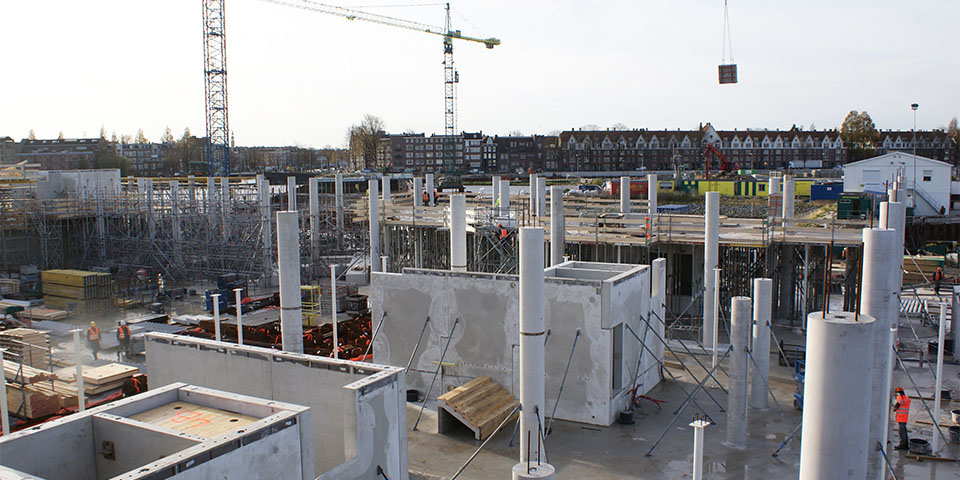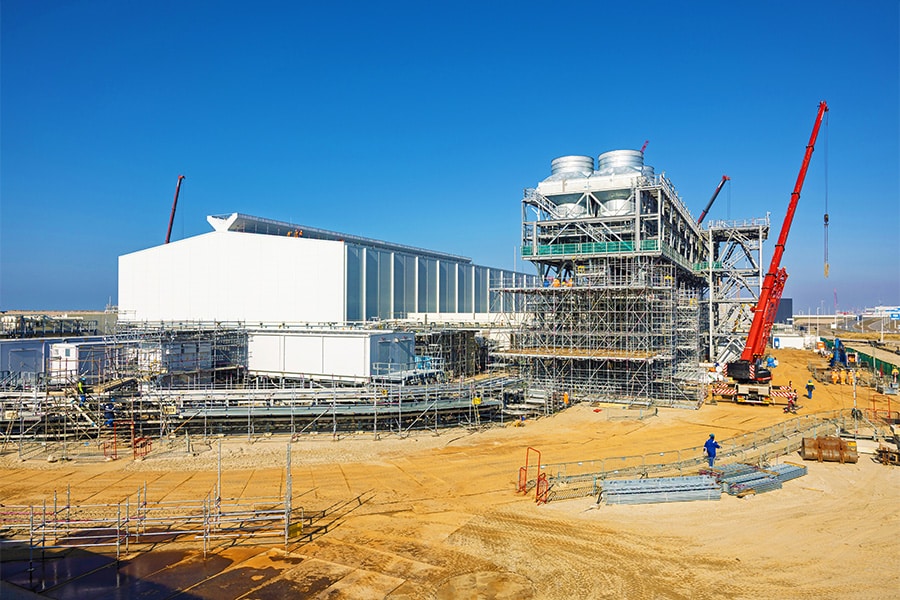
Concrete is not so crazy at all!
Four questions about concrete
It is claimed that building with concrete is bad for the environment, but is that true?
If you compare it to not building at all, putting up houses, offices, flats, factories and other structures is always bad for the environment. Regardless of whether you use concrete, stone or wood. Yet building with concrete is more environmentally friendly than you might think. In the Netherlands, concrete contributes only 1.6 percent of CO2 emissions, and that already includes the production of cement and reinforcing steel abroad. When making concrete, cement is the material that causes the most CO2 emissions. In fact, about 80 percent of total carbon dioxide emissions come from cement. The rest of the CO2 emissions are energy for transportation and production.
The 1.6 percent share is low, especially considering that three-quarters of the mass of building materials in residential and commercial construction in our country is concrete. The contribution to carbon dioxide emissions in our country is comparatively not high, but it must go back to zero. The European cement industry has agreed to be emission-free by 2050.
Worldwide, concrete contributes seven percent of total CO2 emissions. That's because of the huge demand. And there's a good reason for that: concrete is strong, safe, lasts a very long time and you can make just about anything with it: towering skyscrapers, homes, sewers, bridges, industrial floors and you name it.
Building with concrete is more environmentally friendly than with wood. How is that possible?
At first glance, building with wood may appear to produce fewer CO2 emissions, but closer inspection reveals that this is not the case. By the way, wood in construction often involves CLT, or Cross-Laminated Timber. This is glued laminated timber, sourced from production forests. Making it requires adhesives and resins containing substances such as polyurethane and melamine-formaldehyde. Protective coatings are also used in the application. To make it more fire-resistant, cladding is required or thicker wood is used. So CLT is something other than a freshly sawn, fragrant beam right out of the woods.
To make a fair comparison, it is best to look at building level. Values per kilogram or ton are less interesting and difficult to compare in practice, because you need a larger volume of CLT than concrete for a building. On the other hand, a cubic meter of concrete is much heavier than glued wood.
Studies show that concrete scores better or comparable to CLT in terms of CO2 load at the building level. But that doesn't get you there. In fact, heating and cooling a wooden building requires more energy than the concrete version. In the case of a house made of wood, the additional heating and cooling alone causes as much CO2 emissions in 15 years as the production of the concrete for a comparable house.
What are these studies?
These are independent studies done in Belgium, Sweden and Norway. The study in our southern neighbors shows that there is no environmental difference between a house made of concrete and one made of regular construction wood. For an eight-story apartment, the difference in favor of concrete is 10 percent. The Norwegian study shows that concrete outperforms CLT in terms of CO2 emissions for a 16-story apartment building, at 8 stories it is about the same and at 4 stories CLT comes out slightly more favorable. Small note: The Norwegians assumed a clinker content of 70 percent for the concrete, which is more unfavorable than the Dutch situation. Here the clinker content is 50 percent.
What does the LCA say about concrete?
The LCA or LifeCycleAnalysis gives a lot of insight into environmental impact and associated CO2 emissions, but there are caveats. The LCA considers 11 important aspects to arrive at a single number: the Environmental Cost Indicator (EQI). This expresses in euros what it costs to compensate for adverse environmental impacts. In the Netherlands, all MKIs of materials used in a building are collected to arrive at a so-called MPG. That stands for MilieuPrestatie Gebouwen.
Life cycle analysis does not measure everything. For example, no attention is paid to the organic matter that is left behind, for example when trees are felled. Furthermore, while uptake and release of CO2 are rightly offset against each other, if the tree had not been cut down, it would have absorbed much more CO2. The increase in biodiversity in river areas due to sand and gravel extraction plays no role in the LCA. Moreover, the useful life for concrete is estimated very conservatively for the analysis: for offices 50 years and for homes 75, when they could easily last more than a century.





